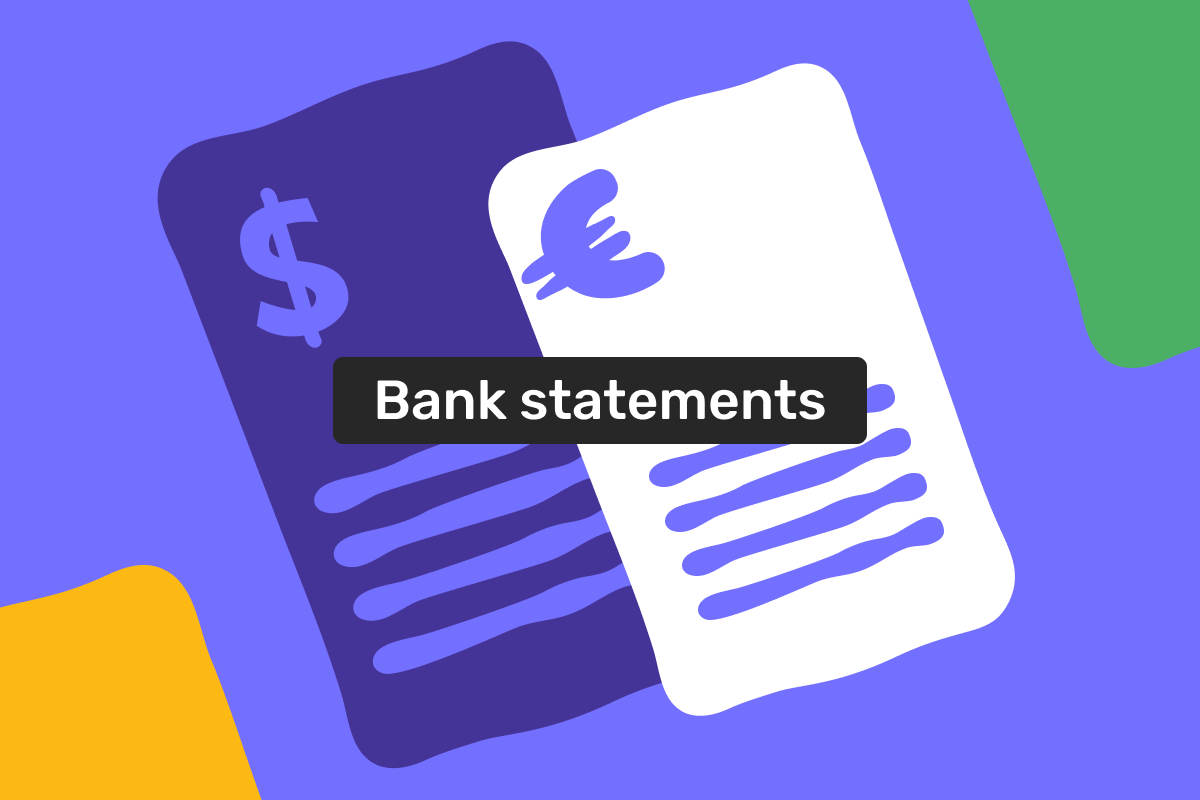Genome Blog / articles / Bank statement: why do you need this financial instrument?
May. 5, 2023
Banking encapsulates many services: money transfers, debit cards, merchant accounts, etc. At least, this is what most people first think about. But there’s more to banking, as clients sometimes overlook small but still essential features. For instance, bank statements.
In today’s article, Genome explains what a bank statement is, how to get a bank statement, and how people can effectively use it to improve their banking experience.
Bank statement: what does it refer to?
A bank statement is a document that lists all the transactions and details about them that occurred inside a bank account during a certain period. Usually, the said certain period is one month, but with the rise of banking applications, clients can generate online statements for whichever period they want.
Such bank account statements contain information on various transactions: transfers, deposits, withdrawals, card transactions, ATM withdrawals, etc.
Clients can generate bank statements on their own, and some financial institutions create account statements for them and send them out monthly.
As for the types of bank statements, there are two: they either come in paper form or electronic form. Remember that a bank statement is a type of report, which
encompasses all your transactions, don’t confuse it with other reports, such as debit card statements, etc.
A bank statement example: what is its structure?
Of course, there are thousands of banks and financial institutions worldwide, so we can’t assume that their bank statement structures look identical. However, some common elements can be found in any account statement. Here’s the list of them:
- The account holder’s full name and address;
- The account number;
- The name of the bank/financial institution and the address of its branch;
- The period for which the account statement was created;
- The account balance and other account metrics, such as credit, debit, and reserved funds;
- The list of all transactions made within a chosen period of time. Each transaction will contain a description of what exactly was done, the date and time of operation, the type of operation, the amount that was transferred/deposited/withdrawn, etc.
How can clients use bank statements to their advantage?
You may need an account statement for more than one purpose. Here are some of them:
- Track all your financial operations. A bank statement offers a comprehensive overview of all your spending and deposits, so an individual or a company can better analyze their spending habits and improve them if necessary;
- Be on top of your savings/interest. This one is self-explanatory – it is much easier to check how much funds you saved during a certain period or what interest you earned. It allows for better financial planning;
- Useful for tax returns. An account statement can be used when you file tax returns, as you need proof of income;
- Checking for inconsistencies and avoiding fraud. A bank statement is a great tool to check if there are any inconsistencies in payments you made/received and, of course, detect fraud;
- Getting loans. When you are getting a loan, a financial institution requires a certain set of documents, including account statements, to better understand your financial history.
How to check a bank statement?
Nowadays, most financial providers allow you to access and generate your account statement online. To create a bank statement online, you just need to find a menu for this type of report, select a period for your bank statement and create it.
If you use Genome, it is very easy! We are an electronic money institution that offers personal and business wallets. Using these, you can open multi-currency accounts, make money transfers, order debit Visa cards, and more!
So, how to find an account statement inside Genome?
- Make sure you sign up and start a personal or a business wallet first;
- Once you have a wallet, log into my.genome.eu From your PC or laptop;
- Click on the Statements button, which is right below your account balance;
- Here, you can either generate an account statement or a fee statement;
- Select the account you want to generate a statement for and a period (current month, previous month, or custom);
- You can either create an account statement in PDF or XML forms;
- Click the export button. Once it’s done, return to the main dashboard and click the Exported reports tab in the left-side menu. Here, you can download your report.
Genome is not limited to just account statements! All the users can also generate transaction reports that have multiple filters and preferences, so clients can sort information the way they want to. To create a transaction report, click the Reports tab in the left-side menu of your personal or business wallet.
Moreover, all Genome clients can create separate debit card statements. To do so, go to the Cards tab in the left-side menu, select a card you want information on, click the Setting button, and select the Get statement option.
If you are a merchant, Genome’s team has developed in-depth reports for all the crucial metrics for your business, such as chargebacks, chargeback ratio, approval ratio, processing, transactions, and more. Find out more about merchant reports here.
FAQ
What is the definition of a bank statement?
A bank statement is a document that a bank or a financial institution can provide for its clients. It contains information regarding transactions that have taken place within a certain period. A company bank statement refers to an account statement generated for businesses.
What are the benefits of bank statements?
An account statement allows for an all-encompassing overview of your transactions. Thus, you can use it to track your spending, savings, and overall financial situation, detect fraud, apply for loans, or file tax returns.
What is required on a bank statement?
The requirements for the bank statement are the following: name, address, account number of the client, the name and address of the bank/financial institution, and the transactions’ details.
What are the different types of bank statements?
Bank statements only differ by their format. You can either receive a printed version of an account statement or get it in an electronic form.
What is the importance of a bank statement to an accountant?
Bank statements allow accountants to better track spending and find mismatches in deposit/withdrawal history.
What is bank statement proof?
It may refer to the proof of funds, which is a document that shows that a person or a company has enough money to perform financial operations.
Is a bank statement the same as a summary?
They are different, as the bank statement is a general overview of your transactions, while a summary report can be generated for different metrics, such as transfers, debit cards, etc.
What is the difference between a bank statement and an account statement?
There is no difference. An account statement is a synonym for a bank statement.
Are bank statements free?
Electronic bank statements are free, but some banks can require a fee for a printed account statement.
How much do bank statements cost?
It depends on the financial institution. Generally, top banks require you to pay between $3 to $6 for a paper bank statement.
What is the difference between a bank statement and a transaction history?
Usually, they contain similar information. The main difference is that the periods reflected in the transaction history are usually more flexible.





